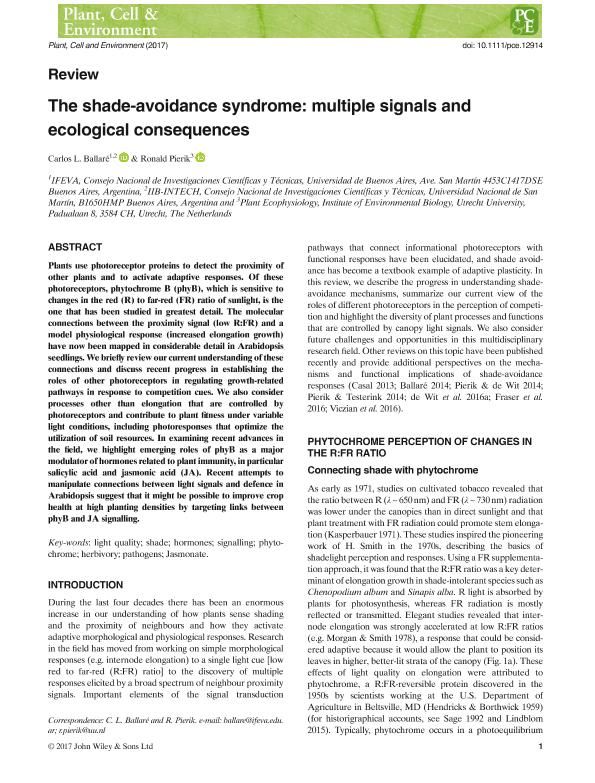Artículo
The shade-avoidance syndrome: Multiple signals and ecological consequences
Fecha de publicación:
01/2017
Editorial:
Wiley Blackwell Publishing, Inc
Revista:
Plant, Cell and Environment
ISSN:
0140-7791
Idioma:
Inglés
Tipo de recurso:
Artículo publicado
Clasificación temática:
Resumen
Plants use photoreceptor proteins to detect the proximity of other plants and to activate adaptive responses. Of these photoreceptors, phytochrome B (phyB), which is sensitive to changes in the red (R) to far-red (FR) ratio of sunlight, is the one that has been studied in greatest detail. The molecular connections between the proximity signal (low R:FR) and a model physiological response (increased elongation growth) have now been mapped in considerable detail in Arabidopsis seedlings. We briefly review our current understanding of these connections and discuss recent progress in establishing the roles of other photoreceptors in regulating growth-related pathways in response to competition cues. We also consider processes other than elongation that are controlled by photoreceptors and contribute to plant fitness under variable light conditions, including photoresponses that optimize the utilization of soil resources. In examining recent advances in the field, we highlight emerging roles of phyB as a major modulator of hormones related to plant immunity, in particular salicylic acid and jasmonic acid (JA). Recent attempts to manipulate connections between light signals and defence in Arabidopsis suggest that it might be possible to improve crop health at high planting densities by targeting links between phyB and JA signalling.
Palabras clave:
Herbivory
,
Hormones
,
Jasmonate
,
Light Quality
,
Pathogens
,
Phytochrome
,
Shade
,
Signalling
Archivos asociados
Licencia
Identificadores
Colecciones
Articulos(IFEVA)
Articulos de INST.D/INV.FISIOLOGICAS Y ECO.VINCULADAS A L/AGRIC
Articulos de INST.D/INV.FISIOLOGICAS Y ECO.VINCULADAS A L/AGRIC
Citación
Ballare, Carlos Luis; Pierik, Ronald; The shade-avoidance syndrome: Multiple signals and ecological consequences; Wiley Blackwell Publishing, Inc; Plant, Cell and Environment; 1-2017
Compartir
Altmétricas




